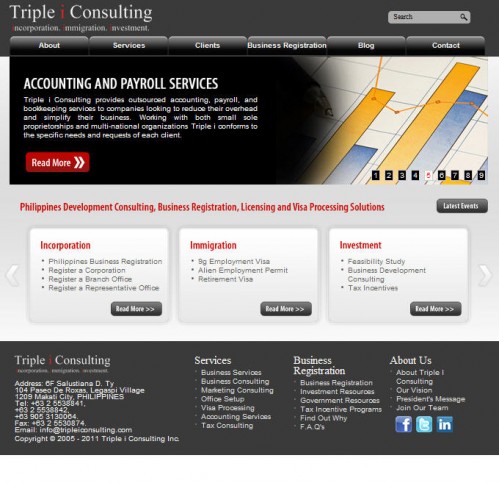This afternoon I attended a presentation at the American Chamber of Commerce. It was the latest installment of the monthly Brown Bag Briefings on Internet tech and social media, and focused on community building and content creation/management. Based on the full room of attendees these would seem to be topics of much interest, and not just to interactive agencies like ours.
A familiar refrain in such discussions (particularly when the speaker is a provider of such services) is that getting and doing social media are no longer merely optional. In business today, the story goes, social media should be considered essential, much like, having a telephone line or carrying around meishi. And today, as with every time I hear this, I had to ask myself: should it really? For all businesses? Really?
Okay, sure, if your business is selling sugared water or sneakers or speakers then, yes, it’s a no-brainer: you should be using social media to promote your products, to tell your story, and to engage your customers. For companies operating in the B2C world, I would agree that calling social media “essential” is hardly an overstatement.
But what about all those unknown entities toiling in the B2B space? What about the thousands of low-visibility SMEs right here in Tokyo, mostly in the business of selling services to each other? Services like IP telephony, and disaster recovery, and web hosting? Companies who provide services like accounting, translation, executive search, or interior design? What kind of story does someone selling rack space in a data center have to tell? What use does a supplier of outsourced payroll and accounting have for Facebook?
Not much, you could argue, particularly when one considers the hurdles you would face trying to make your unglamorous field–perhaps technical translation or life insurance–seem cool.
However, for these folks I think there is one realistic social media option: when it comes to social media, forget about products and services. Find a way to focus instead on the people that make up the organization, particularly:
- The CEO, or Senior- and executive-level members of the staff. In most cases these individuals best personify and embody the core principles of your company, and as such are well-suited to represent you in the social media space. Just google CEO blog to get a sense for how many others out there share this option.
- Your most talented employees, or those with the most experience and expertise. These people represent your “product” if you happen to be in the business of providing services, and social media can be a great forum for promoting your company through them.
- Customer service reps and other employees who interact directly with your customers. Personalizing the customer-facing portion of your enterprise can improve customer satisfaction, and also make prospective customers feel more comfortable approaching or being contacted by you.
Personalizing your company or organization this way is the best way to create and publish a narrative of what your firm is and does. The face you offer the world via social media shouldn’t be about products and services. Where possible it should be actual faces. The faces of the very people that make your organization what it is.
A good example of this is a company in the Philippines we recently hired. They offer a range of decidedly un-sexy services, from accounting to investment consulting to office setup. Like every other company in the world they have a website, wherein resides all of the content you would expect to find there. About. Services. Clients. Contact. Yawn.
 But really, is it supposed to be not yawn? No. It’s just a website. It’s supposed to provide information on the company, what they do, etc. No one expects anything more than that from a website for a company selling business support services. But at the same time you really have no idea, having looked at it, who they are. There is no “face” in the website. It’s the same website you’ve seen a thousand times and will be forgotten the day after you visit it. The same fate awaits the company name. “What was it? Triple something…”
But really, is it supposed to be not yawn? No. It’s just a website. It’s supposed to provide information on the company, what they do, etc. No one expects anything more than that from a website for a company selling business support services. But at the same time you really have no idea, having looked at it, who they are. There is no “face” in the website. It’s the same website you’ve seen a thousand times and will be forgotten the day after you visit it. The same fate awaits the company name. “What was it? Triple something…”
They also have a Facebook page. Have a look.
Now go back and look at the website again.
Now back to Facebook.
I’ll bet the first thing you clicked on was the photos. How many did you look at, and how did viewing them change your perception of the company? “Change” might not even be the correct term here. More accurate to say the pictures created your perception of the company. In my case my perception of the company went from “2D non-entity” to “fully realized human.”
What adjectives could you use to describe them having only seen the website? If you’re like me? None. “Company.” End of story. But now? Cheerful. Friendly. Diligent. Capable. Pretty.

What do you know about Triple i Consulting now? Let’s assume you’re looking for the kinds of services they provide. Are you more or less comfortable with the idea of contacting them? I was more so, and I did. Not bad a bad return for uploading some photos, wouldn’t you say?
Now, understandably, chances are good this kind of thing is not an option for your particular company. Maybe no one there–yourself included–even wants to be the “visible” face of the company. Perhaps your kind of business prizes anonymity over exposure, preferring obscurity to the bright lights of social media. If so, well, you belong to that group for which social media has little to offer, and exist as poof that, no, not all companies need to get, use or do social media.
But for the rest of you? Personalize your company. Humanize your brand. Find a suitable medium and get out there. Perhaps it’s video content on YouTube, or a company page on LinkedIn or Facebook, or someone clever or witty in your organization armed with a Twitter feed and a mandate to be vocal.
Your products or services may not be especially interesting or hip (to the rest of us out here), but the people behind them? There is a good chance they have something to say, even if only with a cheerful smile.
The result? Your social media strategy can be as simple and easy as letting them say it.



